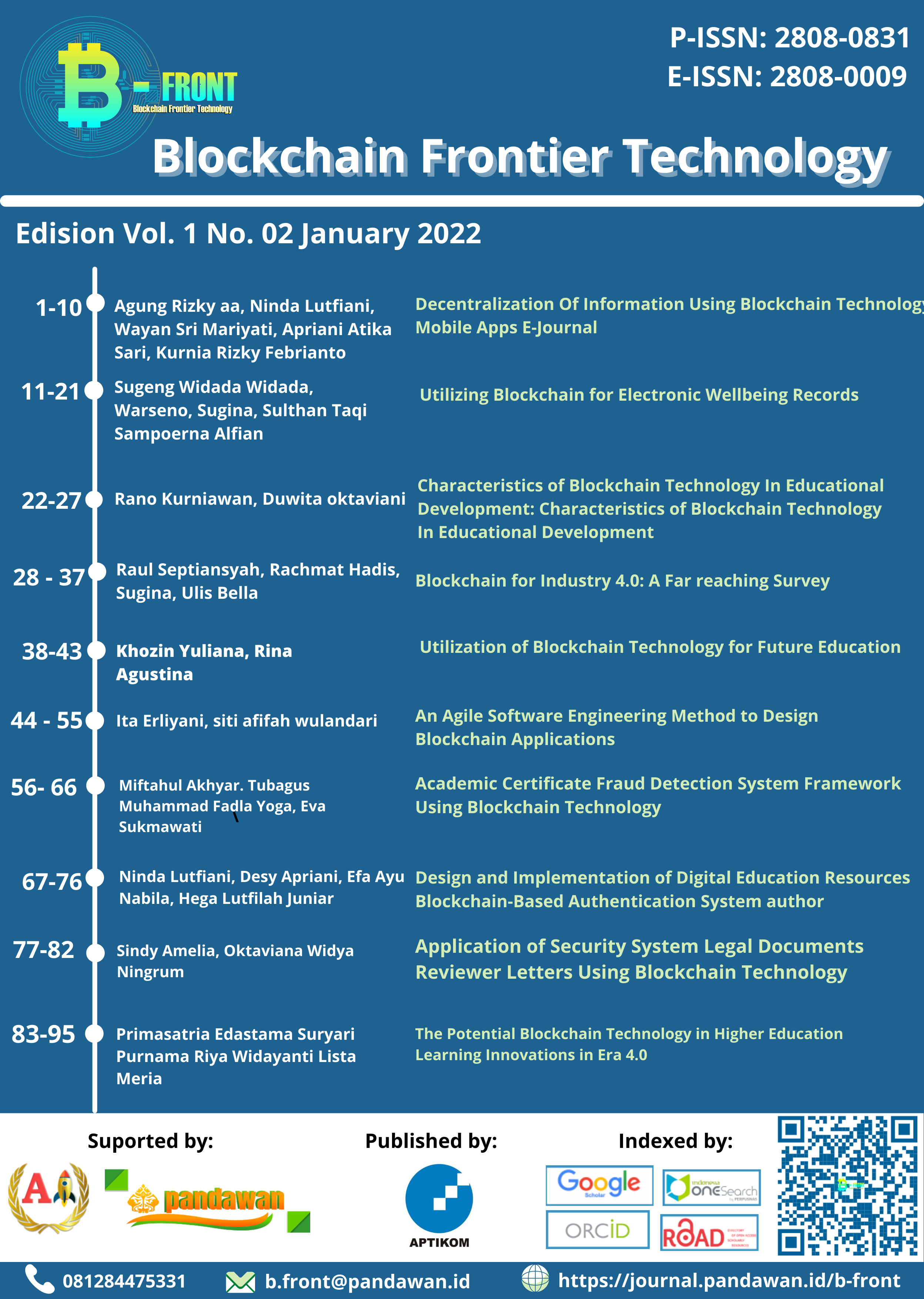Blockchain-based Ubiquitous Learning Method towards Higher Education security
DOI:
https://doi.org/10.34306/bfront.v1i2.53Keywords:
Blockchain, Competencies, Mined by consensus, Digital certificate, P2P · ConfidenceAbstract
In the last fifteen years, the acceleration of technology and information has been accelerating from year to year. Along with the ongoing digitalization, which brings different problems, issues that often arise regarding the preparation of the current workforce are moving towards further education. In this preparation, pragmatic and hypothetical information can emerge from various containers, mean and channels, whether formal or causal. In addition, it is very difficult to evaluate the level of information skills that students acquire in order to increase their chances of finding jobs in the future. This, along with the need to oversee general education programs, the issue of certainty when approving these files and distinguishing them from original information, and so on, implies that administration in further education needs new, progressive instruments. This work assesses the advantages of blockchain innovation (or delivered notes) and supports a decentralized certainty model for blockchain ubiquitous deployments. In this methodology, blockchain is used to oversee transactions of substance, education and abilities, evaluated with the approval of students, mentors and businesses, to remove for the last time the "gap" between academia and the world of work. This paper intends to address the pervasive, open and ubiquitous current challenges of continuing education. The proposed model can be implemented in any preparatory organization to tailor instructions to the specific needs of an expert profile approved by superiors at the second summit. This model is approved by the method for models with results that more than just acknowledge.
Downloads
Published
How to Cite
Issue
Section
License
Copyright (c) 2022 Miftahul Akhyar, Tubagus Muhammad Fadla Yoga, Eva Sukmawati

This work is licensed under a Creative Commons Attribution-ShareAlike 4.0 International License.














 This work is licensed under a
This work is licensed under a 